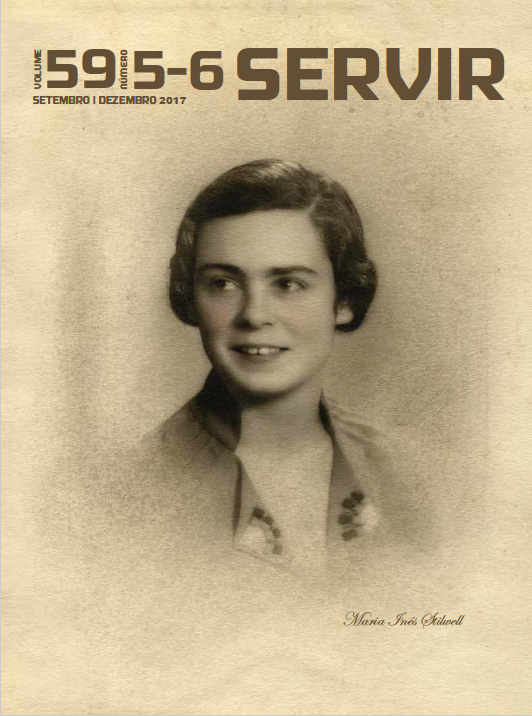Organizing the provision of health care by “primary nursing” promotes quality
DOI:
https://doi.org/10.48492/servir025-6.23469Keywords:
Primary Nursing, Quality of Health Care, NursingAbstract
Hospital organizations are influenced by policies, namely economical, and by technological advances and the effects of globalization, which altogether put emphasis towards the achievement of results. However, a continuous quality improvement should when people are at stake the processes aimed to achieve maximum efficiency cannot jeopardize the quality of care provided. The quality nursing care may imply a change in the traditional working methods of the more conservative paradigms of nursing. The method of reference nursing is congruent with the delegation of the management of care and simultaneously facilitates the professional development of nurses. We believe that it promotes co-responsibility and contribution of nurses, is a guaranty of quality of care, stimulates the nurse-patient ratio, favours the coordination and evaluation of care and encourages the use of the nursing process, which is indispensable to the achievement of this method. On a personal level, we can consider the contribution to maintaining motivation, reducing monotony, stimulating interest to learn, and allow nurses to directly see the final product of their work while deciding the processes and procedures for its implementation. The method of reference nursing promotes personalized monitoring of the patient and family, reinforces the nurse-patient relationship, contributes to the improvement of care, planning and development, and provides an individualized communication based on truth, trust and mutual respect. Based on literature and experience, we believe that organizing the provision of nursing care per nurse reference is a strategy to ensure quality of care. It is an enriching experience of formal delegation of authority in reference nursing to manage nursing.
care.
Downloads
References
Antoli & Sasot, J. (1998). The reference nurse, working satisfaction and that of the patient, Abstract Enferm Clin.8,2, 71 acedido em: http://www.elsevier.es/en/abstract/revistas/enfermer-ia-clinica-35/the-reference-nurse-working-satisfaction-and-that-5867-metodo-1998#3b77e723b-d0ae48e6cf841362dccd573
Capelas, M.; Vicuna, M. & Coelho-Rosa, F. (2011). Avaliar a qualidade em Cuidados Paliativos: como e porquê? Patient Care, janeiro, v.16, n.169, p.11-16
Cardoso, A. (2010). Experiências dos pais na hospitalização da criança com doença aguda. Dissertação de mestrado em ciências de enfermagem. Acedido em: http://repositorio-aberto.up.pt/bitstream/10216/26863/2/Dissertao%20Ana%20Cristina%20A.pdf
Carmona, L & Laluna, M. (2002).“Primary nursing” : pressupostos e implicações na prática. Revista Eletrônica de Enfermagem (on-line em formato pdf), 4, 1, p. 12 – 17, Acedido em http://www.revistas.ufg.br/index.php/fen
Costa, J. (2004).Métodos de prestação de cuidados. Millenium - Revista do ISPV. Outubro de 2004, p. 239
Decreto-lei 22/2012 Plano de Redução e Melhoria da Administração Central.
Escoval, A. (2003). Gerir Serviços de Saúde em contexto de mudança. Revista da Ordem dos Enfermeiros, 10, 24.
Ferris FD, Gómez-Batiste X, Furst CJ & Connor S. (2007). Implementig Quality Palliative Care. Journal of Pain Symptom Management; vol 33, n.º 5
Gillies, D. (1994). Gestión de enfermería - Una aproximación a los sistemas. Barcelona: Salvat, p. 307.
Gómez-Baptiste X, Porta J, Tuca A, & Stjernward J. (2005). Organización de Servicios y Programas de Cuidados Paliativos. Madrid : Arán Ediciones.
Grunfeld E, Lethbridge L, Lawson B, Paszat LF, Johnston G, Burge F [etal]. (2006). Towards using administrative databases to measure population-based indicators of quality end-of-life care: testing the metodology. Palliative Medicine.n.º 20.
Kérouac, S. Pépin, J., Ducharme, F„ Duquette, A. &Major, F. (1994). La pensée infirmière. Conceptions et stratégies. Laval: Édition Études Vivantes.
Malagutti, W. & Caetano, K. (2009). Gestão do serviço de enfermagem no mundo globalizado. Rio de Janeiro: Ed. Rubio.
Moussete, D & Serralheiro, M. (1987). Travail en equipe+soins integraux – Un mariage possible. Nursing Québec, vol 7, 3, 48, In: Pinheiro, M. (1994) Organizar a prestação de cuidados: Uma função / desafio para o enfermeiro chefe. Servir, 42, 6, 317.
Oliveira, L.&Schilling, M. (2011). Análise do serviço de enfermagem no processo de planejamento estratégico em hospital. REGE, São Paulo – SP, Brasil, 18, 2.
Ordem dos Enfermeiros (2002). Padrões de qualidade dos cuidados de enfermagem: enquadramento conceptual e enunciados descritivos. Lisboa: Ordem dos Enfermeiros. Divulgação, 6,42, acedido em http://www.ordemenfermeiros.pt/comunicacao/Revistas/ROE%206.pdf.
Parreira, P. (2005). Organizações. Coimbra: Formasau.
Pearson, A. (1988). Primary Nursing. London: Crom Helm.
Pinheiro, M. (1994). Organizar a prestação de cuidados: Uma função / desafio para o enfermeiro chefe. Servir, 42, 6, 314.
Plano Nacional de Saúde 2012-2016. Acedido em http://pns.dgs.pt/
Rego, A. (2000). Como gerir uma Unidade de Cuidados Intensivos, Servir, 48, 2, 71.
Sequeira, A. & Lopes, (2009). J. Gestão de Cuidados de Enfermagem para uma Assistência Efectiva e Integrada à Pessoa com Toxicodependência. Revista Toxicodependências. P.73.
Sequeira, C. (2006).Introdução à Prática Clínica: do diagnóstico à intervenção em enfermagem de saúde mental e psiquiátrica. Coimbra: Quarteto Editora, p.16.
Simmons J. (2000). Improving the Quality of End-of-Life Care. Qual Lett Healthc Lead. novembro
Urden, Linda D., Stacy, Kathleen M & Lough, Mary E. (2008). Thelan’s Enfermagem de Cuidados Intensivos - Diagnóstico e Intervenção. 5ª Edição. Loures : Lusodidacta - Sociedade Portuguesa de Material Didáctico, Lda
Downloads
Published
How to Cite
Issue
Section
License
In order to promote the free circulation of knowledge, Servir is open access journal. All its content is available and protected under the Creative Commons license (CC BY 4.0).
The journal allows self-archiving in institutional repositories of all versions, which may become immediately available


